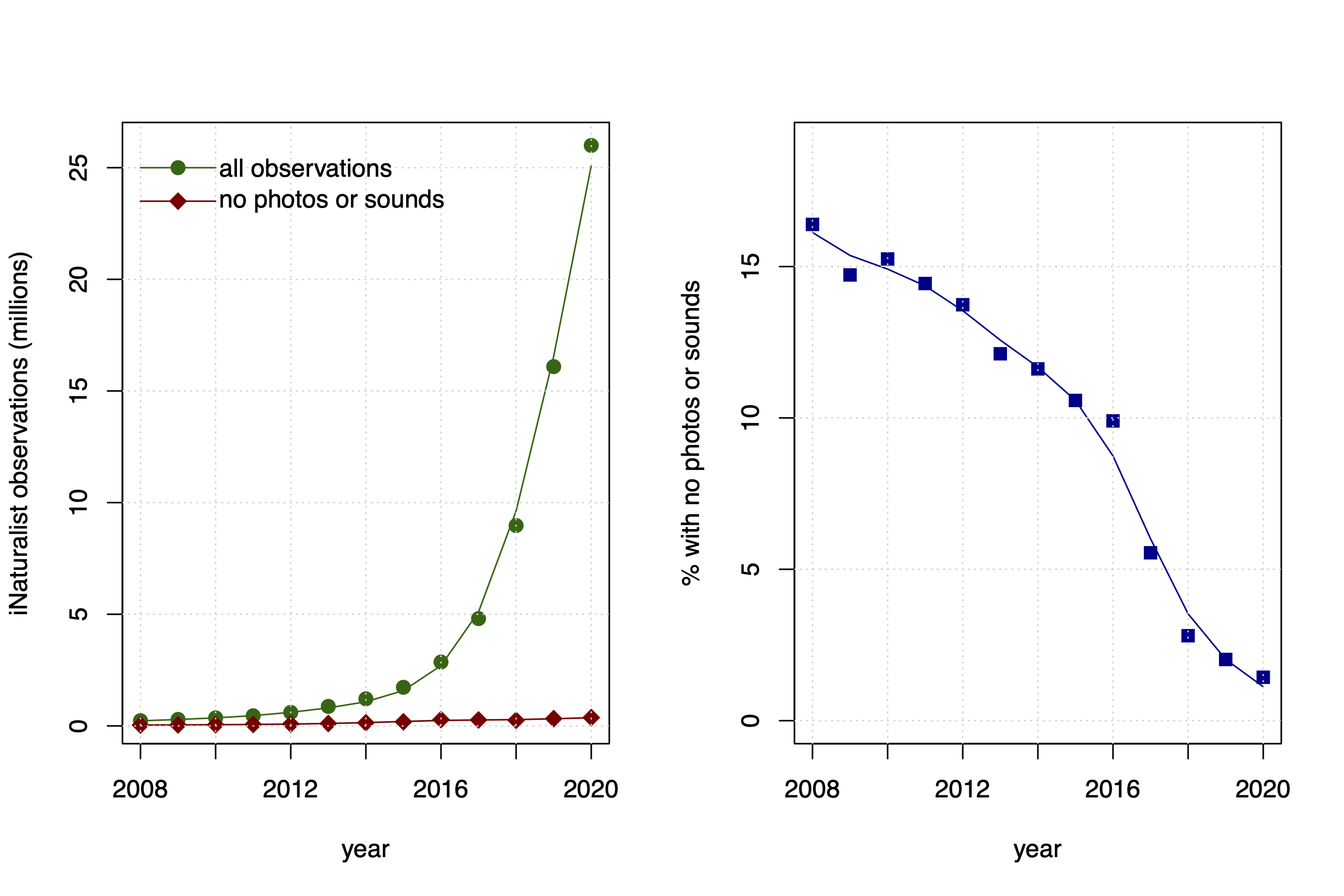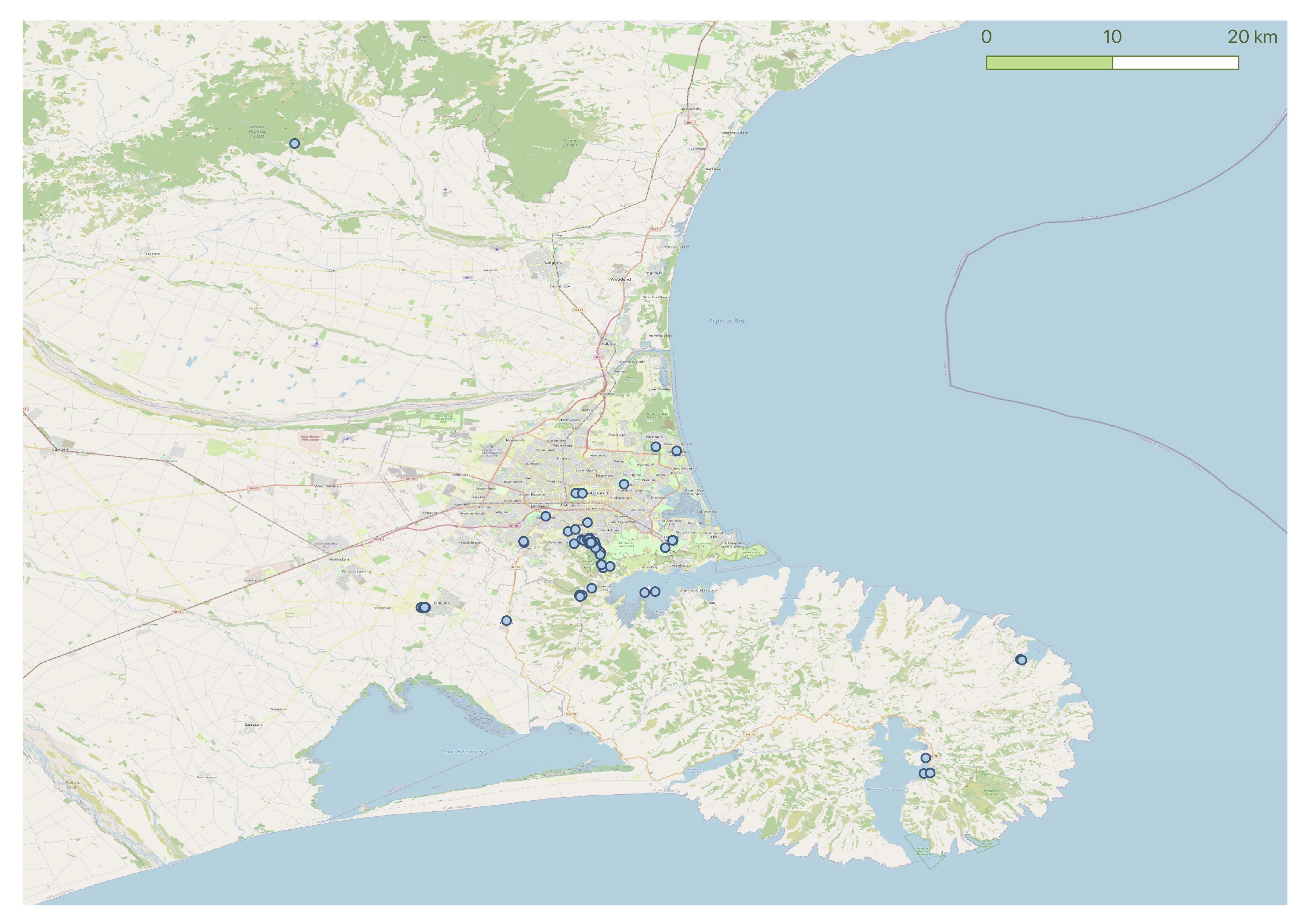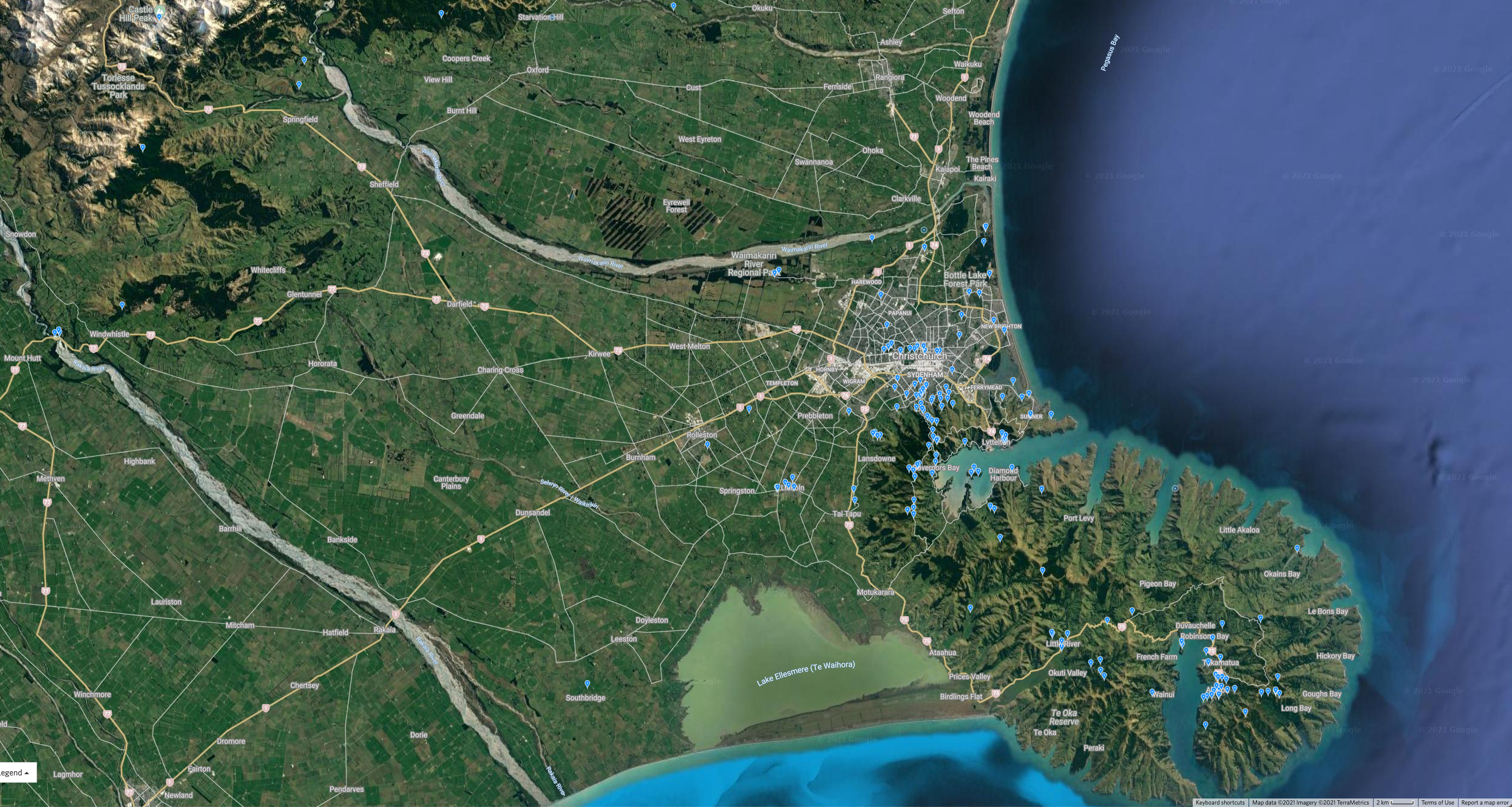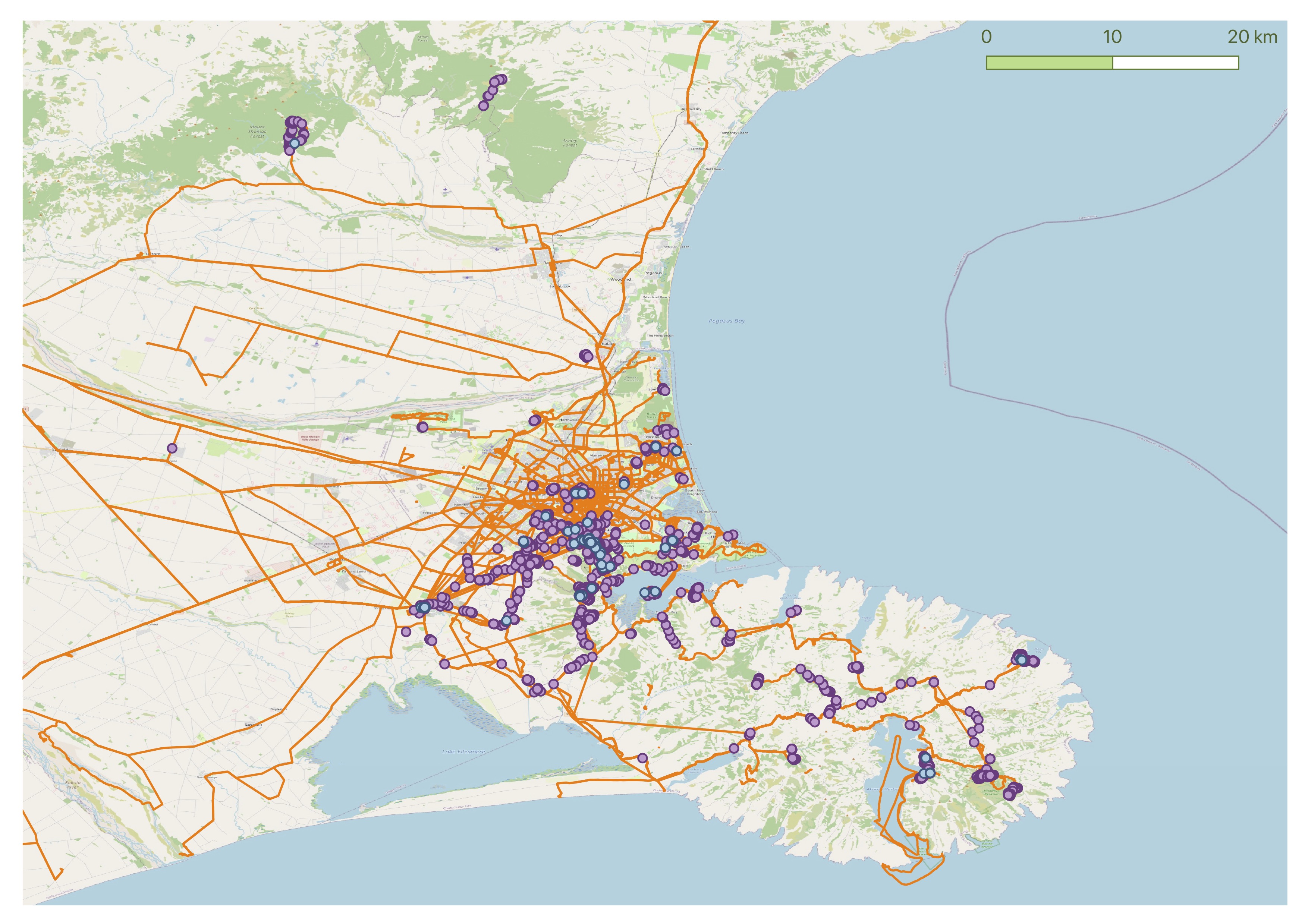RECENT ARTICLES
- CEBRA: An optimised and standardised sampling protocol for BioBlitz
- Stop it people, the plural of anecdote IS data!
- That's no pollinator, that's a flower visitor
- Add a scale to your macro photos
- What to photograph when counting the wild
- Imagine counting the wild on EVERY street in a city!
- My wild counting workflow
- A butterfly flew through
- Why iNaturalist observations without photos can be research grade
- Why you shouldn’t use a spreadsheet for data entry
- All articles ...
Less than 2% of my observations have a photo, and that's a good thing!
You don’t have to photograph, or audio record, or collect, every wild species that you count.
written May 25, 2018 (last updated Oct 1, 2021) • by Jon Sullivan • Category: Wild Counting

Before I start, let me get one thing straight: I love natural history collections! Museums, herbaria, iNaturalist, I love them all. There’s a huge amount we can learn about the natural world, and ourselves, from large, diverse, well-curated collections of specimens. That’s true whether they’re physical specimens on shelves, or digital specimens on servers. That’s why I am happy to spend so much of my time supporting and contributing to iNaturalist NZ.
Having said that, the world’s wild is reeling from the massive environmental transformations caused by humanity’s rise. Ecologists describe it as the Biodiversity Crisis because we live in an age of near unprecedented and climbing rates of species extinction.
Despite this, we know very little about how wild species, and their ecosystems, are responding to these transformations. As a society we invest next to nothing into monitoring these responses. Museum staff still collect specimens, as they’ve always done, and now lots of people are taking photographs of species and uploading them to the internet using tools like iNaturalist. However, I’m not convinced that ad hoc natural history collections of specimens, even massive digital ones, are sufficient to monitor the many changes happening in nature. We need real monitoring!
The emphasis of natural history collections has always been on specimens. Specimens are independently verifiable evidence that the thing found was what we say we found. Specimens can be remeasured, magnified, dissected and sequenced. With modern DNA sequencing, microscopy, and mass spectroscopy there is an enormous amount we can learn about the past by examining old specimens.
This devotion to verifiable evidence in natural history museums can also be seen online. Natural history websites, like iNaturalist, are built to emphasise observations with photos and recordings above written observations. Photos are the digital specimens that let others independently validate identifications. When I first wrote this, in 2018, just 11.4% of the 11,746,048 observations on iNaturalist lack photos or sound recordings. It’s been steadily sliding since then, and in 2021 is now down to just 3.4% of 92,474,526 observations overall. This is not a criticism. iNaturalist has found its niche as an online community making an extraordinary natural history collection of photos, and that is useful in a lot of ways.

Still, I worry that this devotion to specimens can be an obstacle to monitoring, when people think that observations without real or photographic specimens are less valuable. They’re not. Birders using eBird already know this, but for many other taxonomic groups there’s still a big focus on specimens.
Is one observation with a photo more valuable than one observation without a photo? That is true only if there’s no context. However, it’s much less clear in context, when you know who the observer is, and how reliable their identification is likely to be. In that case, which observation is more valuable depends on what the observation is of, and when and where it was made. The presence of a photo becomes just a bonus.
Things flip the other way when the observation with the photo is a casual observation, taken out of curiosity, while the observation without a photo was part of a large set of consistent wild counts, with all of the What-Where-When-Who-Why-How recorded. In almost all cases like this, the observation without the photo will be more valuable. It’s only the observation without the photo, when combined with the rest of its wild counts dataset, that can easily reveal robust trends and patterns in nature.
Less than 2% of my observations are supported by a photo or sound recording, and I see that as a very good thing. It means that I’ve made a lot of counts. If I had to take a photo, or sound recording, of everything I saw and heard while monitoring, I’d be doing vastly less monitoring. What’s much more important is that I have a subset of observations with photographs, as they can be used to assess my ability to identify species, and to assess how my ability has changed over time.
For example, I’ve made over 55,000 observations of the New Zealand bellbird, korimako, in my own wild counts, but only about 400 have photos. You don’t need me to photograph 55,000 bellbirds to convince you that I can correctly identify bellbirds. Also, because these are from my bird monitoring, I’ve got many tens of thousands more records of places and times where I didn’t see or hear bellbirds. I know exactly where and when there aren’t bellbirds.



That’s the power of monitoring: by consistently looking for the same things using the same methods, over and over again, repeating in many places, I can efficiently and robustly document patterns and long term trends. I fully expect technology to be capable of doing this affordably in the near future, but it can’t now, and we don’t have a time machine. It’s up to us, with our smart phones, to count now’s wild.
So, do keep on taking photos (and collecting specimens if you’ve got the right permits). Just don’t stop there. Photos should just be the beginning. Use these to demonstrate your proficiency at identifying particular species. Then, make a lot more photo-free observations of these species, and consistently record where and when you don’t find these species. In other words, make a lot of wild counts.
I’ll learn much more by making 55,000 more photo-free bellbird monitoring observations, than making 400 more casual photos of bellbirds. You don’t need photos to make wild counts, and the world needs more wild counts.
